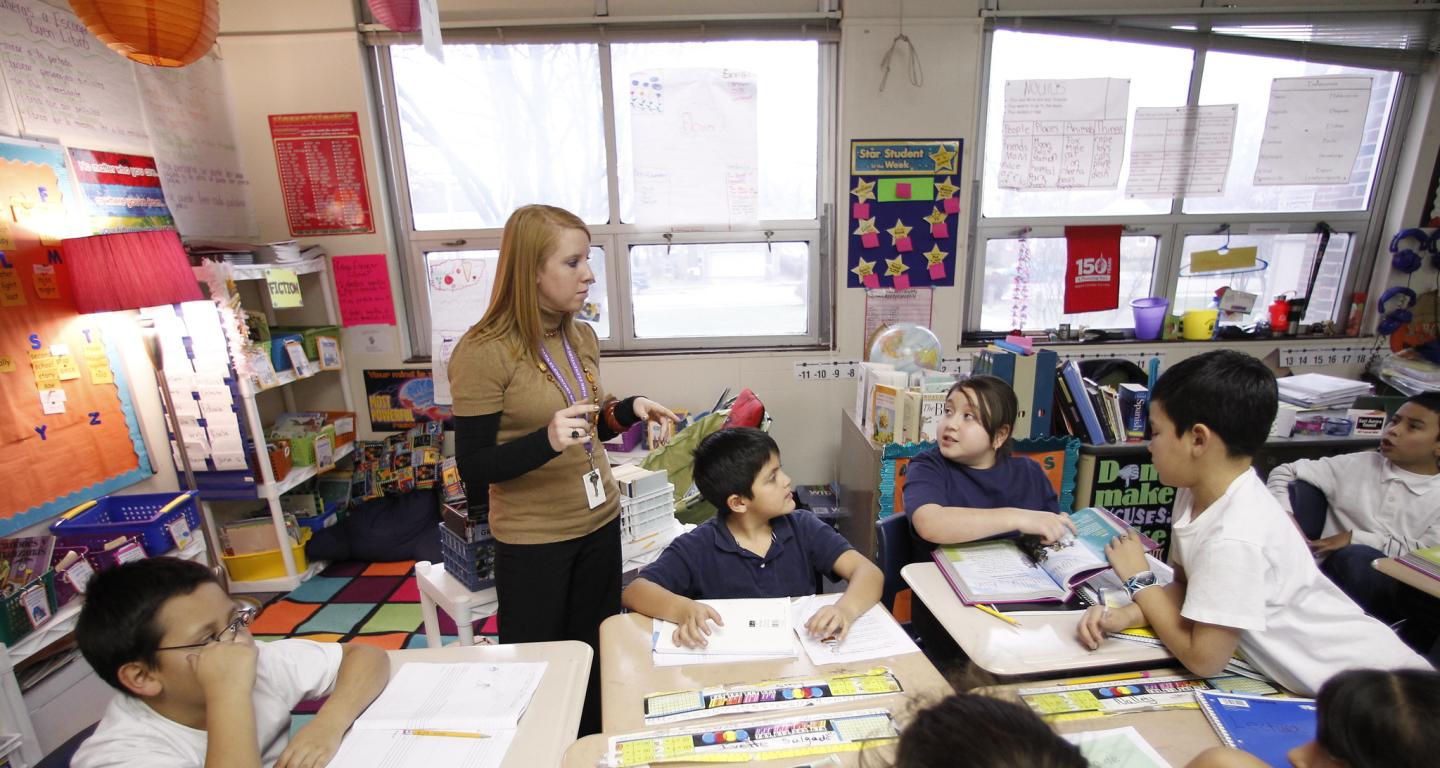Get Top Results with Primary Science Tuition Singapore from Experienced Tutors
Get Top Results with Primary Science Tuition Singapore from Experienced Tutors
Blog Article
A Comprehensive Guide to the Various Understanding Techniques in Primary Science Instruction
The expedition of varied learning methods in main scientific research instruction provides a chance for instructors to boost student engagement and comprehension dramatically. By analyzing hands-on understanding techniques, inquiry-based methods, and collective methods, we can recognize reliable techniques that provide to various discovering styles.

Hands-On Discovering Strategies
Hands-on understanding techniques play a pivotal role in primary science direction, engaging trainees in active exploration and experimentation. These approaches allow students to interact straight with sensations and products, promoting a deeper understanding of clinical ideas. By utilizing manipulatives, versions, and real-life experiments, teachers produce an atmosphere where students can observe, hypothesize, and check their concepts.
Such methods not only enhance comprehension but additionally grow important reasoning and analytic abilities. When trainees participate in tasks like constructing basic devices, planting seeds, or performing chain reactions, they are urged to ask concerns and seek solutions with their own monitorings. This experiential technique assists to demystify complicated clinical concepts, making them a lot more relatable and accessible.
In addition, hands-on discovering promotes cooperation among peers, as pupils frequently operate in groups to perform experiments or share findings. This teamwork not just enriches their discovering experience but also creates vital social skills. Eventually, incorporating hands-on methods in key science direction fosters a long-lasting love of knowing and inquisitiveness about the all-natural globe, laying a strong structure for future scholastic pursuits in scientific research and beyond.
Inquiry-Based Understanding
Inquiry-based learning is a training strategy that encourages trainees to ask inquiries, examine sensations, and create their own understanding of clinical concepts. This method moves the emphasis from conventional teacher-led direction to an extra student-centered experience, where learners take the effort in their educational trip. By cultivating inquisitiveness, inquiry-based knowing promotes deeper interaction with the product, permitting pupils to discover subjects in a meaningful context.
In practice, this method usually involves hands-on experiments, observations, and crucial thinking activities that straighten closely with the scientific method. Students are encouraged to develop hypotheses, design investigations, and evaluate data, which grows necessary skills such as analytical and analytical reasoning. The function of the educator in this framework is to help with expedition, leading students through the inquiry procedure while urging independent idea and partnership.
Furthermore, inquiry-based understanding supports a sense of possession over the discovering process, inspiring students to seek expertise actively. This method not just enhances understanding of scientific principles however likewise fosters a long-lasting love for knowing, equipping pupils with the abilities required to browse a significantly complicated world.
Collaborative Understanding Approaches
Collaborative knowing strategies equip pupils to take part in significant communications with peers, cultivating a shared responsibility for their academic end results. In key science instruction, these methods urge students to interact to explore scientific concepts, fix troubles, and conduct experiments (primary science tuition Singapore). By joining team tasks, trainees can utilize varied viewpoints, permitting richer understanding and retention of scientific understanding
One secret element of collaborative knowing is the emphasis on interaction abilities. Trainees need to verbalize their ideas, pay attention proactively to others, and discuss ideas, all of which are vital expertises in both real-world and scholastic contexts. This social communication not just boosts their understanding of clinical concepts but likewise advertises team effort and dispute resolution skills.
Furthermore, collaborative learning frequently results in boosted inspiration and involvement. They are more most likely to take ownership of their understanding trip when students see the worth of their contributions within a group. Educators can facilitate this procedure deliberately structured team tasks that straighten with curriculum objectives while giving support on efficient collaboration methods. In general, including collective understanding techniques in key science instruction grows a dynamic discovering environment that prepares trainees for future scholastic and social great site difficulties.
Innovation Assimilation in Scientific Research
The combination of modern technology in primary science direction boosts finding out experiences by providing innovative tools and resources that sustain various mentor techniques, consisting of joint learning - primary science tuition Singapore. Making use of digital platforms, simulations, and interactive applications enables trainees to engage deeply with scientific concepts, assisting in a much more hands-on technique to understanding
Digital research laboratories, as an example, enable students to perform experiments securely and efficiently, promoting inquiry-based knowing. These tools can mimic real-world scientific scenarios, allowing students to visualize intricate procedures that would be challenging to reproduce in a typical class setup. Moreover, modern technology cultivates interaction and partnership among pupils, as they can share searchings for and function together on projects via on-line systems.
Furthermore, multimedia presentations and instructional videos can improve lessons by providing to diverse understanding designs, making abstract ideas more obtainable. Data evaluation tools additionally equip pupils to gather and analyze scientific information, enhancing vital assuming skills. In general, the strategic consolidation of technology in main scientific research guideline not just boosts interaction yet also prepares trainees for a technologically sophisticated culture, equipping them with necessary skills for future clinical endeavors.
Set Apart Instruction Techniques
Set apart instruction techniques are necessary for addressing the diverse requirements of learners in main scientific research education and learning. These approaches enable teachers to tailor their mentor approaches to suit differing abilities, passions, and learning styles within the classroom. By employing distinguished direction, instructors have a peek at this website can develop a comprehensive setting that fosters engagement and improves understanding of clinical principles.
One effective strategy is to use versatile grouping, which allows students to work together with peers at similar skill levels or with differing perspectives. This approach urges peer learning and advertises critical reasoning. In addition, using selections in jobs can encourage trainees, allowing them to select tasks that resonate with their interests while still meeting curricular purposes.
Additionally, integrating tiered tasks is one more important strategy. By making tasks with varying degrees of complexity, instructors can make sure that all students are suitably tested, no matter their efficiency. Utilizing developmental assessments to determine comprehending further makes it possible for instructors to readjust their training approaches dynamically, guaranteeing that each student gets the assistance they need.
Inevitably, executing set apart direction approaches in main scientific research education not just enhances trainee learning results but likewise grows a passion for scientific research, preparing students for future academic quests.

Final Thought
In recap, effective primary science instruction requires a complex approach that encompasses hands-on knowing, inquiry-based techniques, and collective methods. The combination of innovation and separated guideline better provides to varied explanation discovering styles, cultivating an environment helpful to expedition and essential reasoning.
The expedition of varied knowing methods in primary science guideline offers a possibility for teachers to enhance pupil interaction and comprehension considerably.Hands-on knowing techniques play an essential duty in key scientific research direction, involving students in energetic expedition and trial and error.Inquiry-based discovering is a training approach that urges trainees to ask questions, explore sensations, and construct their very own understanding of clinical concepts.Joint discovering methods encourage trainees to involve in significant interactions with peers, promoting a shared obligation for their educational end results. On the whole, integrating joint discovering approaches in main scientific research direction grows a vibrant learning atmosphere that prepares students for future academic and social obstacles.
Report this page